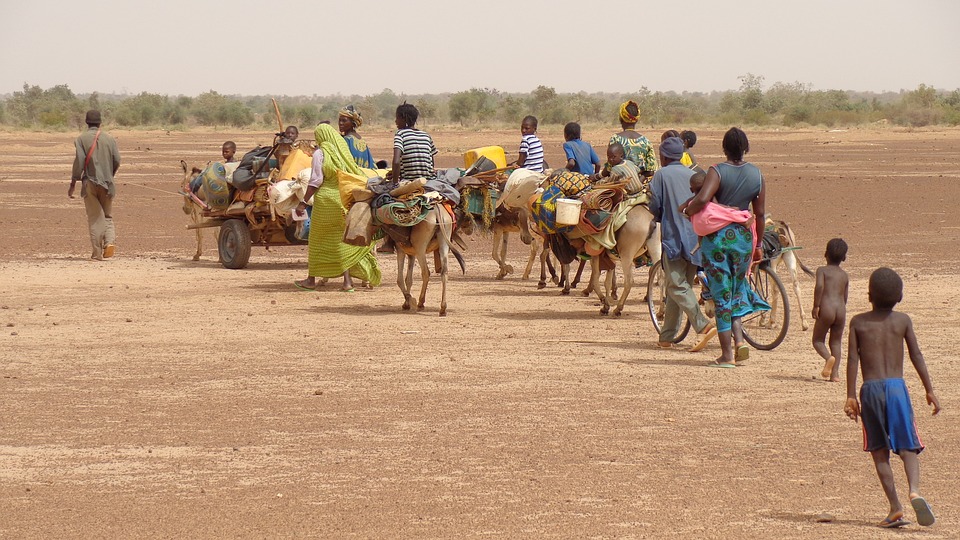What about climate change induced displacement of people?
Climate change is not just an environmental matter anymore. Millions of people are more or less affected, depending on the regions where they live and on the resources, they are equipped with. Since the biggest producers of emissions negatively affect the life of people living in countries far apart, it is clear that now, more than ever, it is a cross-border problem that needs a cross-border action to be effective.
The number of people moving because of natural disasters increases. Millions of people are internally displaced every year after floods, storms or wildfires [1]. This makes the impact of the environment on the human mobility visible. Asia is the continent where countries count the largest number of internal displaced[2] people because of multiple factors, environmental change included, for instance China, the Philippines, India, Japan and Thailand. To make the matter worse, the internally displaced people are the most exposed to risk since they don’t benefit of any support from the international community.
On the other hand, due to the mix of the environmental factor with the demographic, the economic and the political ones, it is not simple to demonstrate the causal link existing between climate change impact, slow degradation of the environment and migration.
Environment and displacement of people from environmental change are cross-border issues, which need to be treated as such. In fact, these events can’t be stopped by borders, they go far beyond the authority or the sovereignty of a single country. Looking at the countries the most responsible for the emissions that trigger the climate change (one-sixth of the world’s population), one can observe a paradoxical geographic pattern: these western countries are the less affected by the phenomenon. At the opposite, the sub-Saharan African countries and the small islands as Antigua and Barbuda are those who suffer the most the consequences of climate change because they lack the resources to properly adapt. Furthermore, the news inform us of the protectionist attitude of some of these emission-producing countries, who build walls in order to secure their national borders and prevent from the potential arrival of climate change-induced migration.
 Photo published by Quartz on November 9th 2017 (Reuters/ Adnan Abidi)
Photo published by Quartz on November 9th 2017 (Reuters/ Adnan Abidi)
Climate agreements will go on failing until local economic factors will be considered a priority. ‟States are reluctant to assume new obligations for protection, especially in the absence of any specific precedence of states recognizing forced environmental migration as a basis of a humanitarian crisis needing prompt attention”[3], noticed a group of researchers of the York University in 2016. The solution is ‟creating the right conditions that can make migration a choice, not an obligation”[4], suggests Dina Ionesco from Migration, Environment and Climate Change (MECC) Division at the International Organization for Migration (IOM).
Fortunately, some effective responses have been carried out. We can think of the Philippines’ National Disaster Risk Reduction and Management Plan (2010) or the Global Compact for Migration, that’s waiting to be adopted by the countries by 2018. The latter, in particular, aims to represent a landmark political declaration to improve the action of the international community with respect to the refugees and the migrations.
Above all, New Zealand leads the way towards a better management of asylum-seeking people facing climate change. The national government is considering allowing up to 100 people a year to enter New Zealand under a new visa category, specific for people displaced by climate change.
Although the worst direct effects of climate change over population are undergone by the developing countries, who consequently find themselves in alarming situations, the issue concerns us all since the environment is everyone’s common good. As for the management of natural resources, we need a cooperative approach that combines actions on different levels and especially between countries in order to look after and think efficient solutions for environmentally displaced people. Forasmuch as the humankind is at risk, we should all feel concerned.
Tiziana Censi, Climate Reporter
[1] Inquirer.net. Over 19 million people are internally displaced in Asia [online]. Globalnation.inquirer.net/161355/19-million-people-internally-displaced-asia (November 24th 2017).
[2] Ibidem.
[3] Sloat, Sarah. “Climate Change Refugee” Visas could soon be a reality. Thousands are displaced from disasters every year [online]. https://www.inverse.com/article/38012-climate-change-refugee-new-zeeland (November 24th 2017).
[4] Ionesco, Dina. To stay or to go? Sudden-onset disasters displacing tens of millions every year [online]. https://japantoday.com/category/features/opinions/to-stay-or-go-sudden-onset-disasters-displacing-tens-of-millions-every-year (November 24th 2017).
